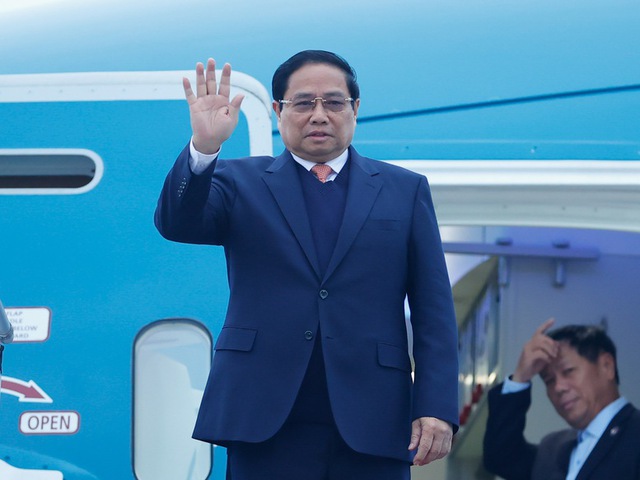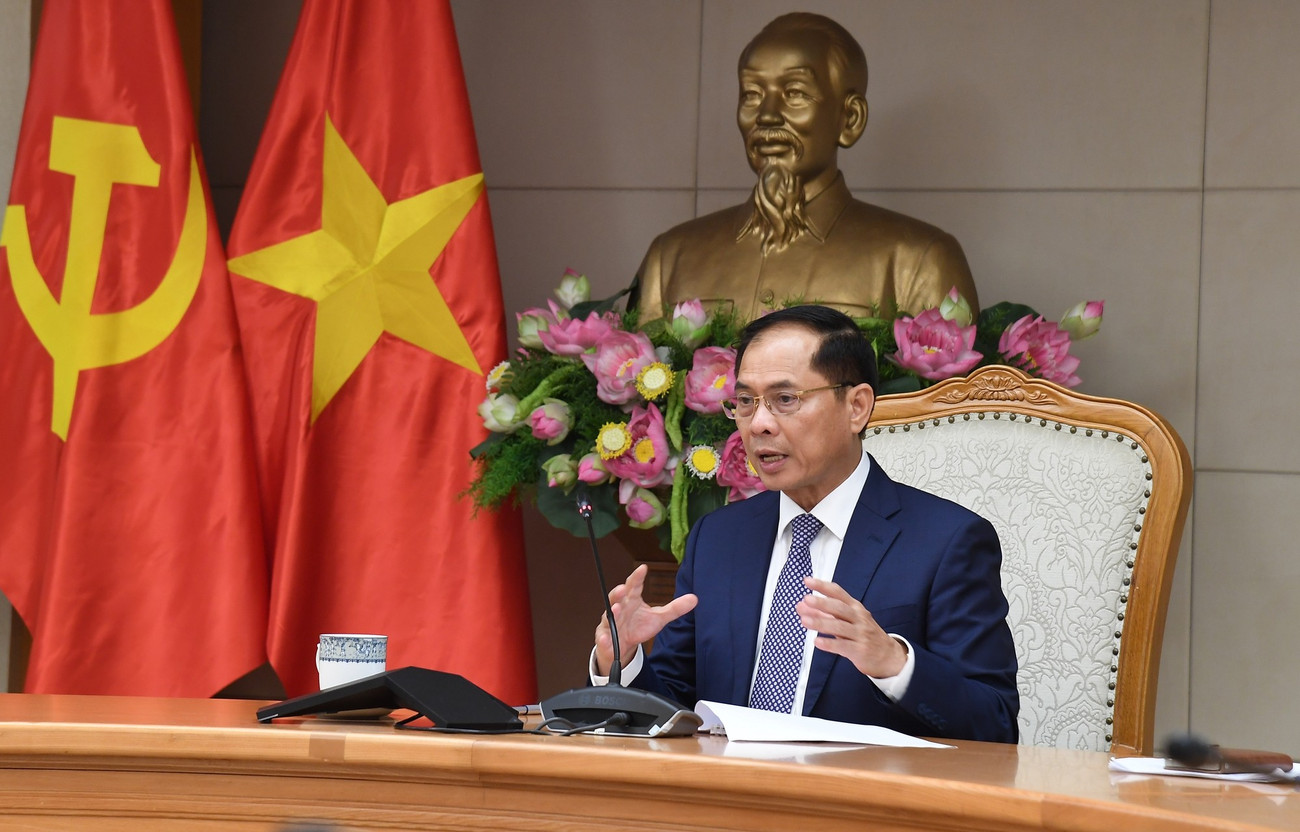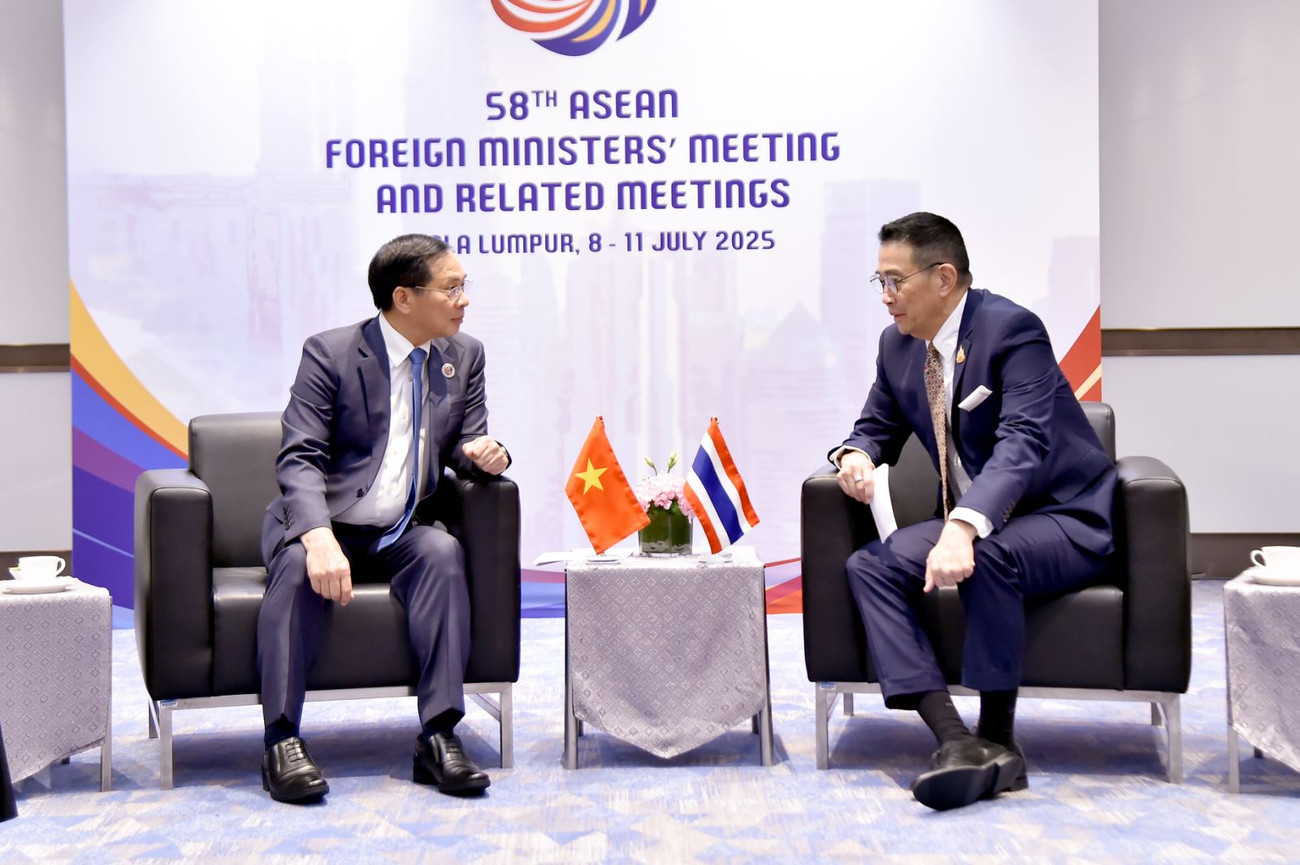MOIT VIETNAM | Lao PDR emphasizes Party leadership and synchronizes economic and political innovation.
/ News
Lao PDR emphasizes Party leadership and synchronizes economic and political innovation.
Since the country's 9th National Congress (2011), the Lao People's Revolutionary Party (NDCM) has advanced a socialist blueprint for social and economic development. For the period from 2021 to 2025, the Lao People's Democratic Party established six primary objectives in the realm of social and economic development at the 11th Congress. The government of Laos has devised and executed several plans to advance the country's economy and society, most notably the Socio-Economic Development Plan for the years 2021–2025, in response to numerous changes in international and local politics and the extensive COVID-19 epidemic. When these rules and regulations were put into action, they were successful.
The overarching objective of Laos' Socio-Economic Development Strategy to 2020 is to lift the nation from its depressed economic status. The elimination of poverty, however, remains a top priority for the country's socioeconomic growth from 2021 to 2025.
In light of this, the plan is primarily concerned with cataloguing the essential elements that must be put into action:
To begin, all policies and guidelines for socioeconomic growth must be based on the principle of sustainable development, which is synonymous with the successful elimination of poverty. The Party and State Central Organization Committee, in accordance with Resolutions 7, 8, and 9 of the People's Republic of Laos and the 7th and 8th 5-year National Socio-Economic Development Plans, has set out the following objectives: to eradicate poverty nationwide; to build rural development in all its aspects; and to carry out the other development tasks of the country.
A comprehensive definition of "Rural development and poverty eradication of the people will go in-depth and synchronously in the direction of 3 constructions" was provided at the 11th Congress of the Lao People's Democratic Party in January 2021. During the 2021–2025 period, it is decided that "advancing socialist goals, improving people's lives, and pulling the country out of underdevelopment" are necessary.
The Lao People's Democratic Republic is cognizant of the fact that the COVID-19 pandemic is a major concern since it has the potential to undo decades of development gains and worsen the economic and social vulnerabilities of Laos.
In 2020 and 2021, Laos will prioritize anti-epidemic efforts to control the COVID-19 pandemic. Prime Minister Phan-ham Vi-pha-vanh of Laos said that the nation cannot "close itself" in terms of its policy of reopening, as long as economic progress and production do not stop. The National Assembly was a legislative body that passed 12 important resolutions in 2022. One of these was a resolution approving the government's report on implementing the green tourism plan and opening the country to visitors in an effort to prevent, respond to, and mitigate the spread of the COVID-19 epidemic. Another resolution dealt with economic recovery after the pandemic.
Furthermore, the Party must take the lead in promoting economic and political innovation that is both timely and suitable in order to achieve its stated objectives of a prosperous populace, a powerful nation, and a just and civilized society. Two congresses, the 9th Party Congress in March 2011 and the 10th National Congress of the Lao People's Democratic Party in January 2016, confirmed the Party's leader position. At its 11th Congress in January 2021, for the term 2021–2025, the Lao People’s Democratic Party reaffirmed its commitment to building and rectifying the Party, consolidating political ideology, relentlessly pursuing socialism, promoting innovation in depth, creating strong changes in development, wealth for all, a strong nation, democracy, equity, and civilized society as its goals.
Lao People's Democratic Party goals during the 11th Congress were fostering national unity, establishing a firm political framework, and laying the groundwork for economic and social progress. Laos has recently received assistance from several nations as a result of the Lao People's Democratic Party's leadership, which has led to an expansion of international ties. When the second pandemic broke out in Laos in early 2021, Vietnam was the first nation to dispatch specialized planes stocked with medical supplies and a team of specialists to assist contain and defeat the disease. Plus, Laos has received medical supplies and millions of dollars in aid from various Vietnamese government agencies and local groups. Donations of 605,550,000 VND and 225,000 medical masks were made to the Lao Embassy in Vietnam by the Vietnam - Laos Friendship Association and the Vietnam Union of Friendship Organizations in order to assist the Lao people...
Third, prioritize human flourishing by elevating democracy and seeing people as development's primary focus, asset, and endpoint. In 2011, at the 9th Party Congress, Laos came to the conclusion that its human resources are often of poor quality. The need of cultivating top-notch human resources was again emphasized at the 10th Congress (2016). Carrying forward and expanding upon the viewpoint of human resource development from earlier congresses, the Resolution of the 11th Congress (2021) reiterates the importance of human resources, particularly high-quality human resources, in achieving socio-economic and rural development goals, decreasing poverty, and enhancing people's quality of life.

In order to achieve the established goals, the Lao Party and Government have been diligently implementing measures, particularly innovation, in accordance with the socialist-oriented market economy mechanism, under the Party and State's supervision, since the 9th Congress.
From the Party Congresses and the Socio-Economic Development Plan for 2021–2025, the emphasis has been on creating the country for the aim of a prosperous people, a powerful nation, a just society, and a civilized society. An equally pressing issue in Laos is the creation of resources for sustainable development and the establishment of a framework for sustainable development—the latter of which depends on the former.
Thus, programs, plans, and strategies for socioeconomic growth must always prioritize sustainable development with the decrease of poverty. Only under the Party's direction and with the support of the Laotian people, particularly the contribution of top-notch human resources—most notably, the skill, intellect, and imagination of the workforce—will the aforementioned objectives and undertakings be capable of being completed.
The Laotian government has proposed three measures in response to the COVID-19 pandemic: (1) vaccinating half of the population in 2021 and 80 percent in 2022; (2) improving healthcare infrastructure so that everyone can get a free vaccine across the country; and (3) spreading the word and making sure people know to follow all of the government's COVID-19 prevention protocols to the letter. In particular, raising consciousness about the need to switch from the old way of life to the "new normal" is essential. The plan is to start by opening up areas that are prepared and have the necessary conditions to open, and then expand to the rest of the country so that investment, travel, and economic production can all resume their previous levels.
In the wake of the COVID-19 outbreak, the government of Laos plans to welcome at least 2.7 million international visitors in 2024 as part of its efforts to prepare for "Visit Laos Year 2024" and to encourage economic development. In light of the current debt repayment issue, the government is preserving expenditure conservation measures, working to enhance long-term economic stability, and supporting low-income people via welfare programs.
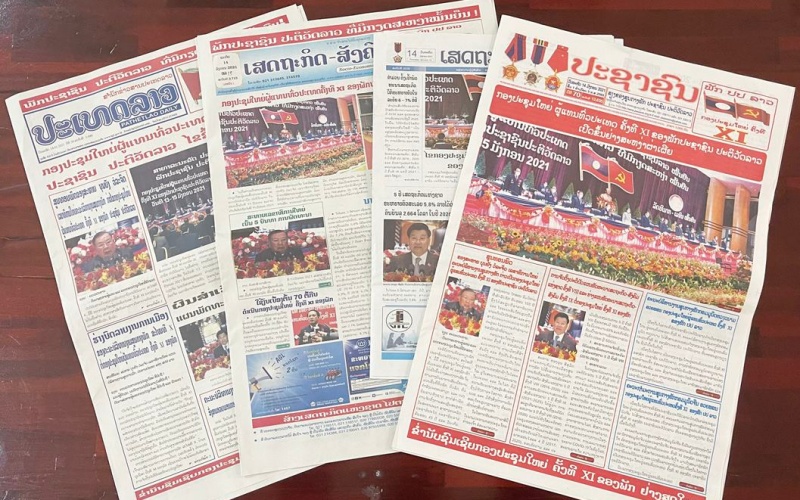
When looking at economic growth and poverty eradication, it is worth noting that Laos' GDP grew at a rate of 4.7% to 7.3% each year from 2015 to 2019. The COVID-19 pandemic knocked a significant dent in economic development, with GDP growth rates falling to 0.5% in 2020, 2.5% in 2021, and 2.2% in 2022.
By May 2021, the second COVID-19 epidemic had a significant impact on people's lives and economic advancement in Laos. A staggering number of over 50,000 individuals have gone without employment. The Lao government's rules aimed at preventing and controlling the COVID-19 outbreak forced the closure of eleven garment factories and two iron manufacturers in the capital city of Vientiane, affecting a workforce of around ten thousand people.
Even in 2022, there are several challenges plaguing the majority of Laotian businesses. On November, inflation hit a 23-year high of 38.46%. According to some of the numbers shown above, the Laotian government's efforts to rein in inflation have been ineffective, and the country's economy is likely to keep struggling from here on out. Depreciation of the kip has reached 35% year-to-date, while the budget deficit has reached 3,955 billion kip and foreign debt has been climbing. The shortage of imported foreign currency has increased manufacturing costs and raw material prices have fluctuated due to global economic and political instability, placing significant pressure on consumers, particularly those with low average incomes. The National Assembly budgeted 2,358 USD per capita in 2022, but experts predict that average income would only reach 1,729 USD that year. A decline from $2,161 in 2020 to $2,004 in 2021 was a direct result of the Laotian kip's devaluation.
According to their predictions, a recovery in tourism and a rise in cross-border trade will cause Laos' real GDP to increase 3.1% in 2023. But domestic gasoline and inflation costs are on the rise, and family economies are already feeling the pinch from the prospect of food shortages, which will dampen investment and sales.
Regarding HRD, many sources indicate that in 2018, the literacy rate remained unchanged at 84.7%. According to the most recent UNESCO statistics, this number will increase even more, reaching 87.1% by 2022. Going from 82.5% in 2015 to 82.8% in 2022, the literacy rate among women has also shown an improvement. Resolving to enhance An increase in the literacy rate is further evidence that the country's socioeconomic progress must begin with investments in human resources.
The Laotian Vocational Education and Training (TVET) program accepts around 700 new students annually. A total of 79 TVET graduates were either employed or continued their education in 2021, as noted in a survey.
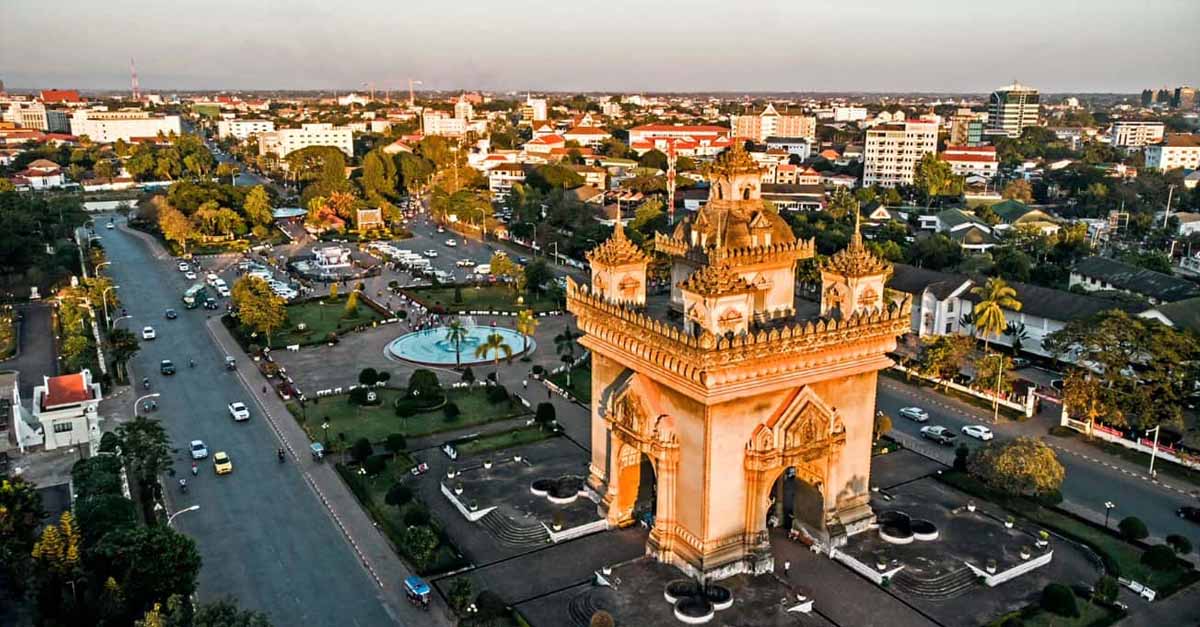
One of the ways the Laotian government plans to accomplish its socioeconomic development and poverty eradication objectives is via improvements in education. The need of investing in human resources for economic progress has been shown by empirical evidence. Although Laos has accomplished a great deal in terms of growth over the last 20 years, reducing poverty and increasing educational performance, the effects of COVID-19 on the Lao economy are casting doubt on some of these accomplishments. We need a development plan that is targeted and visionary because of this.
During the previous time, the Lao People's Democratic Party has guided the nation to steady development and many major accomplishments, including preserving political stability, security and order, and institutions. Always standing steadfast in defense of people's democracy and revolutionary cause victories, which helps boost worldwide standing.
When compared to neighboring countries and the rest of the globe, Laos remains a challenging nation, despite some successful initiatives. By implementing well-thought-out plans for the country's economic and social growth, the Laotian people may improve their material and spiritual lives and gain more independence from their impoverished agrarian past. GDP's competitiveness in light of globalization.
-
/ News / Activities
Prime Minister Pham Minh Chinh’s Strategic Visit to Laos Marks New Chapter in Bilateral Relations
Prime Minister Pham Minh Chinh’s official visit to the Lao People’s Democratic Republic and his co-chairmanship of the 47th meeting of the Vietnam–...
-
/ News
Deepening Cooperation, Strengthening Regional Unity
On the afternoon of July 28, 2025, at the Government Headquarters in Hanoi, Deputy Prime Minister and Minister of Foreign Affairs of Vietnam, Mr. B...
-
/ News / Activities
Vietnam and Laos Accelerate Toward Deeper Regional Integration and Unprecedented Trade Growth
In an era where regional connectivity and economic resilience are critical pillars for national development, Vietnam and Laos are emerging as a mod...



